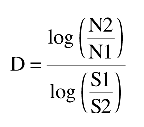TRADING SYSTEMS
Cycle Or Trend?
Fractal Dimension As A Market Mode Sensor
You can use the fractal dimension as a natural way to sense whether the market is in a cycle mode or trend mode.
Is the market trending or cycling? What intuitively seems like an easy question to answer is perhaps one of the most vexing in all technical analysis. If a trader knows the market mode, then a straightforward approach could be taken to adapt a trading strategy to that mode. We would apply a swing trading technique such as an overbought/oversold oscillator in cycle mode and a trend-following technique such as a moving average crossing in trend mode. In this article, we address the cycle/trend problem using the fractal dimension.
A number of tools have been developed to differentiate between cycle and trend modes. For example, we can compare the trend slope over a full cycle period to the amplitude swing of the cycle and use the ratio. More recently, we developed empirical mode decomposition to separate the market into cycle and trend mode components. In this article, we will consider the fractal dimension as a natural way to determine whether the market is in a cycle mode or trend mode.
Fractal dimension
There is no argument that market prices are fractal. Price charts look similar regardless of time frame. If you remove the labels from a five-minute chart, a daily chart, and a weekly chart, you would have difficulty telling them apart. Fractal shapes are self-similar because they have the same roughness and sparseness regardless of time interval. This self-similarity can be defined by the fractal dimension that describes sparseness at all magnification levels.
To determine the fractal dimension of a generalized pattern, we cover the pattern with a number N of small objects of several various sizes S. The relationship of the number of objects in two sets of sizes is:

